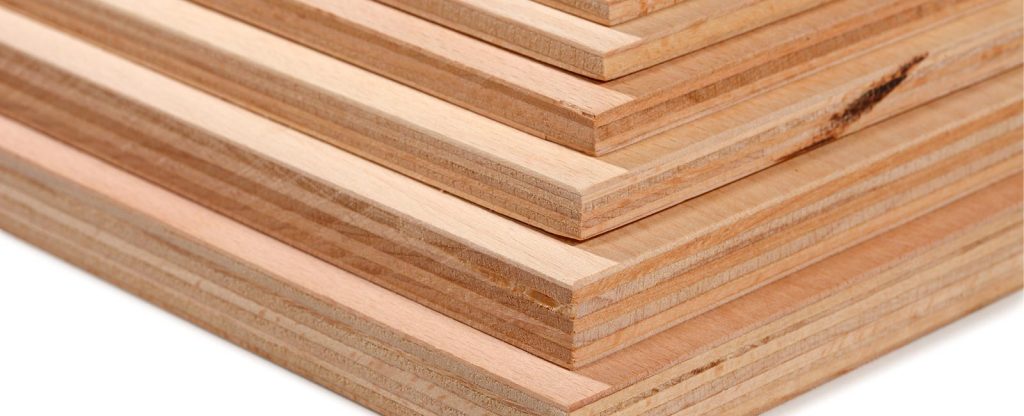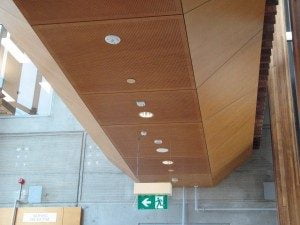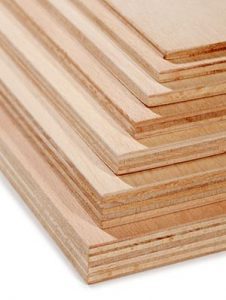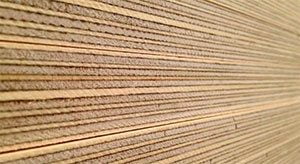Plywood has come a long way since its introduction in the early 20th century. For decades, plywood was often seen as just a mere substitute for solid wood. Today, however, plywood has become the primary choice for many builders and homeowners. Here are 10 of the biggest benefits of plywood.
 1. Plywood looks great.
1. Plywood looks great.
Let’s start with what can be seen from the outside. Few people will argue against the fact that today’s plywood looks great. With plywood panels typically covered with high-quality wood outer ply, plywood can look just as great as real wood. It looks even better when a good quality veneer is used.
2. Plywood is strong.
If you believe that solid wood is strong, you are right. Modern plywood, however, can be just as strong. The manufacturing method of plywood solves any inherent issues with the strength of the natural wood source.
This is because plywood is made of wood plies that have been pressure-bonded with adhesives, at varying angles. This gives plywood a cross-grain throughout its structure, which provides an evenly-distributed, weight-bearing strength. In contrast, solid wood proves stronger only if force or weight is applied along the grain.
Plywood becomes even stronger with the use of veneers as well as strong phenolic adhesives.
3. Plywood is durable.
Because modern plywood boasts of this uniform strength, it can also withstand lots of in-service stress (at all angles) for a longer time. That makes it a more durable alternative to both solid wood and other engineered wood products.
4. Plywood is lightweight.
For all its strength, plywood is surprisingly much lighter than solid wood. That makes plywood easier to use for furniture-making. Heavier solid wood, meanwhile, can prove unwieldy or more labour-intensive, both for crafting furniture and other commercial applications.
 5. Plywood comes in large sizes.
5. Plywood comes in large sizes.
Would a single piece of solid wood be big enough to allow you to make furniture? Of course not. Standard plywood sheets, on the other hand, come in various large sizes, with lengths of at least 1800mm and widths generally at 1200mm. This flexibility in size lets you easily predict how much plywood material and labour you will need for a particular project. So whether you’re building furniture or installing ply flooring, you can plan and limit wasted material.
6. Plywood covers a much bigger area.
Since plywood panels come in larger dimensions, it follows that plywood has it over solid wood when it comes to square foot coverage.
This becomes a huge advantage with large construction projects. There’s less of a struggle for you to find just enough material in pieces that require less cutting. There will be fewer gaps or uneven ends for you to deal with, and wastage will be minimal.
7. Plywood is more pliable and great for curved surfaces.
When was the last time you had it easy creating curved surfaces with solid wood? Probably never. But if you did try something like that, the results weren’t likely as great as you had wished. When you make curved surfaces using solid wood, the edges would probably be rather rough and uneven.
Plywood, on the other hand, can be made to fit any curved surface smoothly and easily. Plywood, however, doesn’t split that easily because of its cross-layered structure. Handled properly, you can bend, cut, or drive a nail or screw through it to conform to a curved surface.
8. Plywood can also be treated for fire prevention or moisture problems.
Today’s plywood can also be made to be fire-resistant and waterproof. That places it at par with the best treated solid wood material available, at a lower cost.
 9. Plywood offers more value for your money.
9. Plywood offers more value for your money.
Best of all, the price of plywood will always be lower than that of solid wood. Plywood is a cost-effective engineered wood product, and that makes it even more popular among homeowners and builders these days.
Cost savings don’t stop at the price of plywood itself. You can utilise every square inch of a standard plywood sheet, so you save on wastage and labour costs. And because it’s lightweight, transporting plywood in large quantities will cost less than solid timber.
10. Plywood is eco-friendly.
To say that plywood has a low carbon footprint may sound a bit ironic, but it certainly isn’t an exaggeration. Yes, plywood uses wood. But its efficient manufacturing methods produce more workable sheets with less wood compared to solid wood panels.
That means more timber is conserved. That makes plywood an eco-friendly product. This is absolutely important, considering the worrisome state of the environment and the world in general today.
With all the benefits of plywood, choosing it for any project that requires wooden materials is the smart way to go. To see which type of plywood would best suit your purposes, check out our wide range of plywood panels here.


 1. Plywood looks great.
1. Plywood looks great. 5. Plywood comes in large sizes.
5. Plywood comes in large sizes. 9. Plywood offers more value for your money.
9. Plywood offers more value for your money.

I like that you point out that you can use almost every square inch of a standard plywood sheet. I can see why this would be something to consider if you are trying to save money and use everything to its fullest. Perhaps it would be smart to consult with a professional about what is best for your situation. That way, you don’t accidentally get something that won’t work.